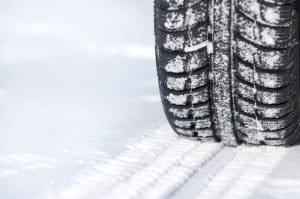Timing, Tips, and Maintenance
When it comes to driving safety and optimal performance, ensuring you have the right tires for the season is essential. In this comprehensive guide, we'll discuss the best time to remove winter tires, provide maintenance tips for a smooth transition, and help you maximize your vehicle's performance year-round.
1. Identifying the Ideal Time to Remove Winter Tires
It is crucial to remove winter tires at the right time to ensure safe driving and prolong the life of your tires. The optimal time to switch from winter to all-season or summer tires is when the average temperature consistently stays above 45°F (7°C) during the day. This temperature is critical as winter tires start to lose their grip and wear out faster in warmer conditions.
Monitor the weather forecast and local temperature trends to determine the best time to change your tires. Keep in mind that sudden temperature drops may require you to delay the switch, especially if snow or icy conditions are expected.
2. Signs That It's Time to Change Your Tires
Apart from temperature, several other factors can signal that it's time to replace your winter tires:
- Tire wear: Inspect the tread depth of your winter tires. If the depth is less than 4/32" (3 mm), it's time to change them.
- Handling issues: If your vehicle feels less responsive, especially in dry conditions, this could be a sign that your winter tires are no longer optimal for the current weather.
- Increased fuel consumption: As winter tires have more rolling resistance, they can reduce your vehicle's fuel efficiency. Switching to all-season or summer tires can help improve fuel economy.
3. Proper Storage of Winter Tires
Storing your winter tires correctly can help preserve their longevity and performance for future use. Follow these tips for proper storage:
- Clean: Thoroughly clean your tires with soap and water to remove dirt, salt, and debris before storing them.
- Dry: Ensure your tires are completely dry to prevent mold and mildew growth.
- Bag: Use airtight plastic bags to protect the tires from moisture, ozone, and temperature fluctuations.
- Stack or hang: Store tires vertically, either stacked on top of each other or hanging on a wall-mounted rack.
- Avoid sunlight: Store the tires in a cool, dark, and dry place away from direct sunlight, as UV rays can damage the rubber.
4. Choosing the Right Tires for the Season
When transitioning from winter to warmer months, consider the following tire options:
- All-season tires: These tires provide a balance between performance, comfort, and fuel efficiency. They're suitable for mild climates and can handle light snow and occasional rain. However, they may not be the best choice for regions with heavy snowfall or extreme temperature fluctuations.
- Summer tires: Designed for optimal performance in warm weather, summer tires offer improved grip, handling, and braking on both wet and dry roads. Their specialized tread patterns and rubber compounds make them unsuitable for winter conditions, so they're ideal for drivers in areas with mild winters and hot summers.
- Performance tires: For drivers seeking superior handling and responsiveness, performance tires deliver enhanced grip and cornering capabilities. These tires are suitable for sports cars and high-performance vehicles, but keep in mind that their softer rubber compounds may wear out faster than all-season or summer tires.
- When choosing your tires, consider your driving habits, local climate, and vehicle requirements to make an informed decision. Consult your vehicle's owner manual or a trusted tire specialist for recommendations tailored to your specific needs.
- 5. Maintaining Your Tires for Optimal Performance
- Proper tire maintenance is essential for maximizing performance, safety, and lifespan. Here are some essential tips to keep your tires in top shape:
- Regularly check tire pressure: Underinflated or overinflated tires can cause uneven wear, reduced grip, and increased fuel consumption. Check your tire pressure at least once a month and before long trips. Refer to your vehicle's owner manual for the recommended pressure levels.
- Rotate your tires: Rotating your tires helps ensure even wear and extends their lifespan. Generally, tires should be rotated every 5,000 to 8,000 miles (8,000 to 13,000 km), but consult your owner manual for specific recommendations.
- Inspect for damage: Routinely inspect your tires for cuts, punctures, or bulges. If you notice any damage, consult a tire professional for repair or replacement advice.
- Alignment and balancing: Misaligned or unbalanced tires can cause uneven wear, reduced fuel efficiency, and poor handling. Have your vehicle's alignment and tire balance checked annually, or if you notice steering issues or vibration while driving.
- Monitor tread depth: Regularly check your tire tread depth to ensure it meets the minimum safety requirements. Use the penny test or a tread depth gauge to monitor wear, and replace your tires when they reach the recommended depth.
- 6. Conclusion
- Switching from winter tires at the right time and maintaining your tires throughout the year are essential steps in ensuring your vehicle's safety, performance, and fuel efficiency. Keep an eye on temperature trends, monitor your tire condition, and follow the maintenance tips provided in this guide to help you make the most of your tires and enjoy a smoother driving experience in all seasons.

